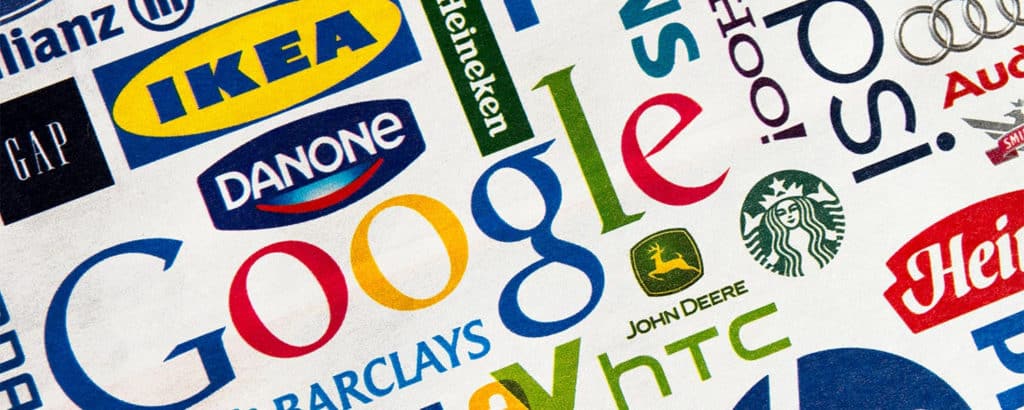
If you own a business, you’ve probably heard the word “rebrand” once or twice. You may have seen other companies or competitors go through the rebranding process, or you may have even been told that your business needs to rebrand. But without a solid understanding of exactly what “rebranding” means or what it fully entails, it’s hard to know if it could be the right move for you.
First things first: taking on a company rebrand is not a small endeavor. If your rebrand is going to be successful, then it’s going to require a significant investment of your time and resources—money, brainpower, and everything in between.
If you speed through the rebranding process or cut corners, you run the very real risk of damaging your brand image and reputation, rather than improving it. That is exactly the opposite of what you want to achieve. So, it makes sense to arm yourself with as much information as possible before starting down the path of rebranding.
Let’s make sure you’re fully informed on the rebranding process, and what it will all mean, so you’ll know you’re doing it for the right reasons—as well as putting your time, resources, and money to their best use throughout the project. If you’re fully committed to getting it right, a successful rebrand will give you a high return on investment and a boost to your company image and reputation.
What Exactly Is A Business Rebrand?
Rebranding can be defined as “the process of giving a product or organization a new image or look in order to make it more successful or attractive to prospective customers.”
And while that is all significant to the process (and a super technical definition), rebranding isn’t just about changing the logo, the color scheme, or the visual identity of a business. That is all part of the process, and there is so much more. This is a unique opportunity to re-evaluate (or newly establish) a company’s values and ethos. Then that understanding can be applied to develop an entire story and create a cohesive brand that works in harmony with everything a business is and stands for.
Considering where a business has come from, where it is currently, where it is headed, and where it has the potential to go, and then applying all of that to a new brand identity, provides an authentic picture of the company to customers, employees, and stakeholders.
Why Would You Rebrand Your Business?

There are many reasons for taking on a rebranding effort for your business. Some main reasons include:
- Your business has changed focus or direction
- Your business’s existing brand looks outdated or unprofessional
- You need to differentiate your business from the competition
- You need to appeal to a new or different customer demographic or audience
- You need to rebuild a reputation or create distance from past issues
- You want to remarket your business by showcasing a new ethos or new set of values
- Your business has experienced rapid expansion or undergone mergers
There are two types of rebranding. The first is proactive branding. This is where a company recognizes that rebranding will create an opportunity for growth or the ability to tap into new markets or niches.
Reactive branding is where the existing brand is redundant and needs to be updated and changed. This could be for a number of reasons; mergers and acquisitions, new or updated products or services, or the need to rebuild a damaged reputation.
Rebranding vs. Brand Refresh
First, you’ll need to decide whether your business needs a complete rebrand, or if you can get by with a brand refresh. Rebranding is a significant investment, so take the time upfront to consider which would work best for you, and which will have the best long-term results.
A brand refresh is just a polishing that updates, or refreshes, your existing brand elements. This is building on the foundation of what you already have established, so you’ll need to be confident that your existing brand resonates with your audiences, portrays an accurate representation of your business, and is strong enough to withstand the refresh.
A complete rebrand is much more involved. In this case, while you don’t want to lose sight of your entire brand identity or completely rid yourself of what keeps your customers coming back, it’s a serious upgrade and a major change to your company’s status quo. This is an opportunity for a fresh start that reinvigorates your business, establishes a new, fresh, and modern direction, and lets new and existing target audiences know that you care about what motivates them, and the images and messages your company is sharing.
Which one do you need? To read more about both and determine the best fit for your business, Read Rebrand or Brand Refresh? Which is Better for Your Business?
When Is Rebranding A Good Idea?
If you find yourself frequently thinking about rebranding, and considering all of the advantages it can bring, let us be the ones to tell you that it might be time to just go for it.
Consider This:
- Are you embarrassed by your company’s current branding or imagery? Do you hesitate to hand out business cards or refer people to your company’s website?
- When you look at your current branding, do you feel like it’s out of touch and outdated? If you’re still using Comic Sans on any marketing materials, deploy the branding experts ASAP.
- Are you looking to attract new customers and ensure your business stands out from the competition
- Do you want to attract fresh, dynamic talent to work for your business?
- If your answer to any or all of these questions is “yes,” it’s probably time to upgrade your business’s brand.
To understand more about the right time to rebrand, read When is the Best Time to Rebrand Your Business?
How Much Will Rebranding Cost?
Rebranding is an investment. This is not a bottom-of-the-barrel solution to your business’s problems, so it’s important that you’re mindful of this when you’re deciding how much time, money, and resources to put into a rebrand.
If you get a rebrand wrong, fixing it will cost much more in the long run than ensuring you are devoting the right amount of resources to get it right the first time.
A Solid Rebranding Strategy Will Always Contain The Following:
- Deep-dive – Researching everything about your business’s history.
- Ideation and brainstorming – Big concepts and big ideas.
- Brand strategy and roadmap creation – Cultivating messaging, positioning, and campaign objectives.
- Creative work – Turning ideas into reality.
- Copywriting – Putting the high-level messaging into carefully crafted content.
Now you can see there is a high level of work and detail that is required to carry out a rebrand successfully. The size and scope of your business will also impact your budget, as well as your reach.
Keep in mind that you are expecting a high-quality outcome as a result of this process, so the investment you put in will greatly increase the returns.
How To Successfully Rebrand

Rebranding is a journey toward discovering the meaning behind your business, and how to accurately portray that to your audiences. There are many factors you’ll need to consider when carrying out a successful rebranding. Missing one of them out could mean that the process doesn’t go as planned or doesn’t have as big of an impact as you desired.
What To Consider Before Rebranding
- A successful rebrand will resonate with and reflect your customers. It is essential to consider their needs and what they are looking for.
- Take a deep look at your reasoning for rebranding, then consider the risks and how you will minimize them.
- Everyone needs to be on board with the rebrand. Ensure you have essential buy-in from your staff and stakeholders.
- Be open to new ideas. A fresh perspective from someone else can help you see things in a new light.
- Scrutinize your existing brand and decide what works and what doesn’t.
- Decide your expected outcome and what the roadmap looks to get to that point.
- Find the right partner to enhance and expand on your creativity and execute the mission.
For more things to consider before rebranding, read 3 Important Things to Consider Before Rebranding Your Business.
Where To Start – Step-By-Step Rebranding Strategy

Now that you have laid the foundation for your rebrand, it’s time to start the process.
- Audit – Review your current brand performance. This includes marketing, positioning, perception, and business goals.
- Research – This is an in-depth analysis of the industry landscape, including competitors and consumer research.
- Ideation – Generating ideas for brand messages, visual symbolism, and business collateral.
- Strategy – Aligning marketing channels, technology, and collateral alongside your business objectives to create a cohesive strategy.
- Creative – Design and development of brand collateral, digital platforms.
- Deploy – Delivery and launch of your new brand.
To read more on starting your rebrand, read How to Kickoff Your Rebrand on the Right Foot.
Rebranding Research

You need to perform comprehensive research, otherwise, you’re just shooting in the dark. Your research will underline all of your reasons for rebranding, and will help you form the strategy you need to carry it all out.
By gathering intel on your customer base and their needs, you can easily identify your ideal customers and retain your existing ones. And getting the low-down on your competitors lets you understand why people choose them over you.
Some good ways to carry out the necessary research include:
- Gather internal data from your own business
- Carry out customer surveys
- Hold workshops and focus groups
- Obtain social media intelligence
Detailed research will help you build your brand strategy and execute it successfully.
For more information on researching, read Rebranding Research: Explore the Landscape and Develop a Strategy
Give Your Brand A Story
Storytelling is called an art for a reason. A great story captivates and inspires people, especially if it is told with authenticity and passion.
Stories surround us, from books and movies, or conversation we have with friends and family members. Stories bring ideas to life and have a lasting impact.
Your brand story sends a powerful message to your audience. It needs to be genuine and authentic, to convey and inspire emotion, and it needs to reflect the heart of your business.
Here’s How You Can Start Building Your Brand Story:
- Get to know your target audience. What are their values? What attracts them to a product or service? You should be able to visualize and describe them clearly.
- Define your core message. What overall message are you trying to convey through your story?
- Inspire emotion. What verbal and visual elements will you use to inspire the desired reaction from your audience?
- Reveal your personality. Your story needs to be personable and relatable to drive authenticity.
- Keep it simple. Try not to bombard the audience with mixed messages or an overly complicated narrative. Keep it concise and straightforward.
For more on how to tell a great brand story, read How to Give Your Brand a Powerful Story
Rebranding Tip — Involve Your Employees And Customers
Involve your employees and customers in the rebranding process, sooner rather than later.
No one knows your company better than you do but your employees are there for a reason, and they have valuable insight that can help guide the rebrand. Find out why they love to work for you, what they love about the company, and what could use improvement. They are the best way to gain a comprehensive insight on how your company values are perceived internally and how they might be getting pushed out externally.
Gather employees from all areas of the business and assign them to be your “brand champions.” Their job is to help you maintain brand consistency and relevance as well as getting buy-in from their colleagues.
Customers are your company’s life-blood, so find out what makes them loyal to you instead of your competitors. Discover what aspects of your existing brand resonate with them and use that information to improve.
Talk to them about how they feel your products or services can be improved and build those improvements into your brand strategy.
For more great tips, read Best Practices for a Successful Rebranding Campaign
Assess The Risks

No investment is completely without risk and of course, rebranding does carry a few risks of its own. But you can take steps to mitigate them or eliminate them entirely.
Some Of The Main Risks Associated With A Rebrand Are:
- Losing or alienating existing customers: By engaging your customers during the rebranding process, you can understand what they need and want from it. Listen to them and act on their feedback to ensure you maintain their loyalty. Many of us remember the unfortunate situation Weight Watchers found itself in a few years back when the brand changed its name to “WW.” None of us want to put our businesses in a similar situation with the customers we’ve worked so hard to win.
- Lacking transferability: Your rebrand might look great on paper but how does it transfer to other mediums? Television, social media, websites, video, and national advertisement campaigns all need to carry the new brand look, so you need to consider how it will transfer to these other areas.
- Breaking your web assets: We’ve mentioned this before, but it’s really important, so we’re going over it again. Moving over to a new domain and website is a big job, but customers still need to be able to find you. Ensure that all re-direct links work and take people to the right area. It’s also worth having a web page explaining your rebrand and why you did it.
- Forgetting about marketing: You’ve invested in the rebrand but have you thought about how you’re going to launch or market it? Set aside a budget for marketing your exciting new brand or it may not make the impact you want.
To read more about rebranding risk assessment, read Avoid These Common Rebranding Risks.
Potential ROI
When you rebrand, you can reap rewards that will give you a major return on investment. By getting it right the first time, there are many things you can look forward to including:
- Increased brand awareness (or brand recognition)
- Increased sales
- Increased loyalty
- Increased market share
- Lower expenses
- Higher staff retention
With all that in mind, you can’t afford not to rebrand.
To read more about the ROI of rebranding, read Rebranding ROI: Why It’s Worth the Investment.
Rebranding And SEO

SEO (search engine optimization) is a big beast to tackle and very easy to get wrong, so it’s worth taking the time to learn how it works.
Even if you plan on hiring an SEO expert to do it all for you, it’s still important for you to understand SEO at a basic level. This will enable you to perform a few checks, maintain your website, and keep it running at an optimum level of visibility in internet searches.
Some Tasks To Help You Achieve Great SEO Are:
- Look at your website structure and simplify it. The more complex the layout, the harder it is for SEO to work.
- Keep your hierarchy (how a person moves through your website) simple and plan it early on.
- Invest in great content that keeps people engaged.
- Speed up your page loading times.
- Optimize your website for mobile phone browsers.
- Frequently review and update your site.
If you’re changing your domain name as part of the rebrand, ensure your mapping and re-routing is completed fully. If it isn’t, it will result in broken links and dead pages, which will frustrate your customers, and possibly cause you to lose them.
To read more about rebranding SEO, read How to Improve Your Website’s SEO During Rebranding.
How To Ensure Longevity
Taking the rebranding plunge is a big step. But now you know the resources and investment required to carry it out. Before you go, make sure you note one more vital aspect of a rebrand that must not be overlooked: ensuring your brand has longevity.
- Get it right: You need to craft a brand identity that stands the test of time. That’s why it’s so important to get this right the first time around. Too many changes or constantly going through the rebranding process will confuse your customers and make them question your authenticity.
- Forecast changes: Your business plans will always take forecasts into account, so it’s crucial that your brand does too. How is your business projected to change in the future? Will your brand stay true to these changes?
- Stakeholder input: Your stakeholders and customers are at the heart of what you do. It is important to take their ideas and feedback to heart while ensure you are able to differentiate between what is and is not helpful feedback.
- Brand consistency: Make sure you have a process to ensure branding is consistent across all aspects and areas of your business. Over time, staff and plans change. An established process will enable your brand strategy to stay on track and maintain consistency.
How To Choose A Rebranding Agency
Not all rebranding agencies are created equal. Choosing the right one can seem like a daunting process. Finding an agency that ticks all the boxes can be a project in itself.
You’re going to be working closely with your rebranding partner, so it’s absolutely essential that you pick one that you’re 100% comfortable with.
Here Are A Few Ways To Help The Process Along:
- Research the options and make a shortlist. Agency websites will be a great place to start.
- Review an agency’s case studies for quality of work, such as the successful rebrands we’ve carried out here at C-leveled.
- Don’t be driven only by price.
- After making contact, think about the rapport and ease of conversation. Do you feel you’re being listened to and respected? Do you like the agency’s attitude and approach to work?
- Keep a close eye on response times to calls and emails.
- Ask relevant and meaningful questions that allow you to gain a full insight into their working practices and ethos.
For more on choosing the right agency, read How to Choose the Right Rebranding Partner.
Conclusion
By now, you should have a solid overview of what a rebrand is and what it entails. By diving deeper and learning more about each area of rebranding, you can build a comprehensive strategy that will help you carry out a successful project.
Rebranding is a big decision, but this should also be an exciting time for your business. It’s your chance to take what you, your customers, and your stakeholders love about your company and transform it into an authentic and powerful message for a brighter future. Perhaps the biggest piece of advice we can give you is to enjoy and relish the process. Make this a labor of love. That way, your brand will become an accurate reflection of what you and your business stand for.
Interesting in having a conversation with an agency based in the United States so you can navigate your rebranding process with confidence? Contact us to schedule a consultation.


